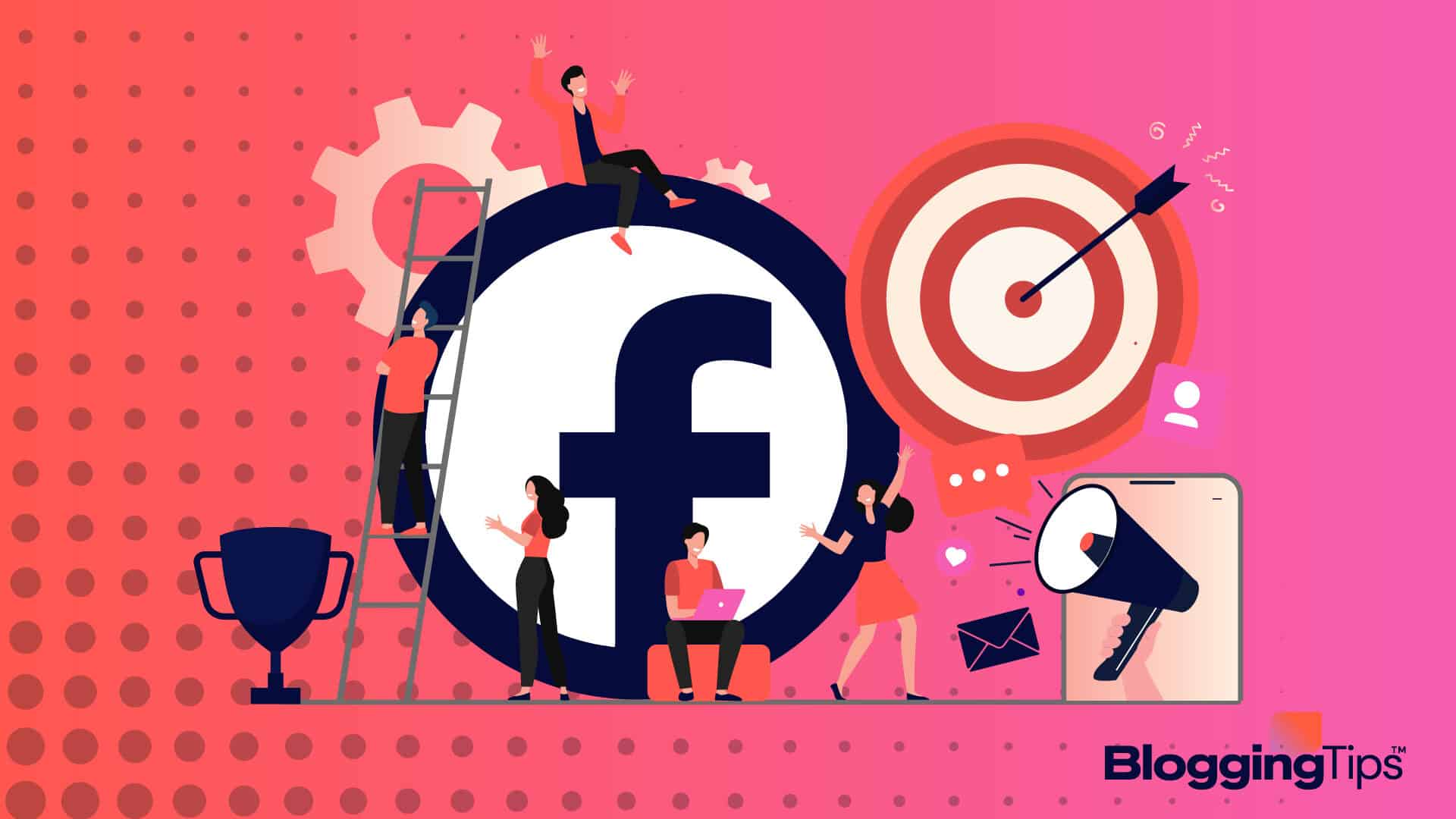Every small business owner needs to be on Facebook.
The stats show why the platform is the perfect place for small businesses to interact with customers and promote their brands.
- It is the largest social network on the planet, with 2,958 billion users
- 66% of users on the platform check out at least one local business Facebook page each week
- Ads on the platform reach 42.8% of global internet users
So, how do you start building brand awareness and customer relationships on Facebook?
In this article, I will show you what Facebook marketing entails, how to develop a marketing strategy for the platform and examples of successful marketing campaigns that you can learn from.
What Is Facebook Marketing?
Facebook marketing describes activities that target a specific audience on the platform with promotional, educational, and fun content with the goal of building awareness about the products and services of a particular brand.
Creating a business page is free on Facebook, and you can use organic social media marketing strategies to promote your brand without spending a cent. There are also paid promotional features like ads, sponsored content, and promoted posts that you can use to get quicker results.
What Are The Benefits Of Facebook Marketing?
Promoting your business comes with several advantages, including:
- Focused marketing: Facebook will provide you with all the demographic information you need to target a specific niche audience. You will be able to target potential customers according to their interests, shopping habits, income, education level, etc.
- Multiple promotional formats: you can promote your business using content marketing via posts, video content, Facebook stories, ads, story ads, etc.
- SEO impact: while it’s true that a robust social media following won’t directly impact your SEO rankings, it can enhance your credibility in the eyes of search engines. A profile with lots of likes and shares tells Google that lots of people want to engage with your brand.
How Can You Start Marketing On Facebook?
Below are four ways you engage with your target audience on Facebook.
1. Create Your Facebook Business Page
Your business page is your outpost on Facebook. It is where people that discover your business via ads and viral content will go when they want to learn more about your brand.
Every text, picture, or video post you upload to the platform will appear on your page’s feed. Your Facebook stories will also be displayed on your page.
So, you must do everything to optimize your page to ensure that it showcases your brand’s personality and provides comprehensive information about your business.
To set up your business page, move over to the nine-dot menu on your personal profile page and click Create > Page.
Choose Business or Brand, then provide the required information. Make sure your page contains the following details:
- Name: your business name
- Category: select the category that best describes the niche your business occupies in your industry
- Description: provide a succinct description of what your business does and why you are different from other competing brands
- A Profile Photo: this is usually your business logo
- Contact information: provide your phone number, business email, and website URL
- A CTA (call-to-action) Button: depending on the nature of your business, this can be “Contact us,” “Book now,” “Get offer,” “Download,” or “Get app”
Once you are done filling out your profile, you can also click on Edit Page Info to access the About section, where you can add more detailed information about your business.
The next thing you need to do is install Meta Pixel on your website. The code will help you track the number of web visitors you are attracting via your Facebook and Instagram ads.
You can also opt to get the Facebook verification check mark for your business.
While it may be difficult for individuals to get verified, it’s much easier for businesses, provided you can supply everything that Facebook needs to confirm the information you are providing about your business.
2. Post Varied Content
One of the major advantages of Facebook is that there is a wide variety of content formats that you can use to promote your business.
This includes:
- Text Posts: they have the highest engagest rate on the platform, and they are most effective when they are short, interesting, and relevant.
- Photo Posts: you can use them to show off your products and to share interesting data with your followers (infographics).
- Video Posts: these can be explainer videos, product launch videos, interviews with experts in your industry, behind-the-scenes videos, or event videos.
- Live Video: you can use them as an effective medium for engaging directly with your audience. They are most effective as Q&A sessions, and you can also use live sessions to show people your product works.
- Links: you can easily add links to your posts and image captions, and they are a very effective way to share your blog posts with your audience.
- Facebook Stories: they are similar to Instagram and Snapchat stories. They only stay live for 24 hours, so they are best suited for ephemeral content.
- Pinned Post: you can pin any existing post to your cover page, and you can remove it anytime. This can be a welcome message, helpful links, user-generated content like testimonials, or any post that you feel will be helpful or interesting to new visitors to your page.
3. Use Paid Ads
Facebook advertising can help you reach a bigger audience on the platform much quicker, but you must ensure you have a few things in place first before launching an ad campaign.
You must have:
- Clearcut objectives for your ad campaign (conversions, impressions, reach, link clicks, or lead generation)
- A website with purpose-built landing pages linked to your ad campaign
- A business Facebook page with detailed information about your business and at least 25 recent posts
Once you are ready, head over to the Facebook Ads Manager via your business page to create your campaign.
You have two options; you can either create a brand new campaign or boost an existing post.
A brand-new campaign is a good idea if you are trying to promote a new product or an upcoming event.
If it’s your first time, I will recommend working with an agency or a freelance Facebook marketer to advise you on the best way to optimize your ad and to guide you through the entire process.
Boosting a post is a much cheaper approach and one you can easily do yourself if you are a beginner.
The post you are boosting must be interesting, and it ideally should have demonstrated viral potential by attracting lots of likes and shares from your current followers. It must also be able to help you achieve your campaign goals.
4. Chat With Customers Using Messenger For Business
The Facebook messenger app is the perfect place to answer the questions of your customers and to address any complaints they may have about your products or services.
Luckily, there are several messenger features that you can leverage to better engage with your customers.
- Messenger Greetings: Facebook lets you set custom messages that can be a greeting or vital information that customers will see before they even send any message to you.
- Instant Replies: these are automated messages that can be set as responses to customer messages to inform them on how to proceed when you are unable to respond immediately
- Saved Replies: Facebook lets you archive old messages and re-use them when dealing with similar customer questions
- Away Message: you can set a pre-programmed away message that will let people know you are unavailable at the specific time they are trying to reach out to you
Customers like approachable businesses; owners that take the time to engage with them and resolve their concerns. Facebook also rewards this behavior, and if you respond to at least 90% of your messages within 15 minutes, you will get a “very responsive to messages” badge.
How To Create A Facebook Marketing Strategy
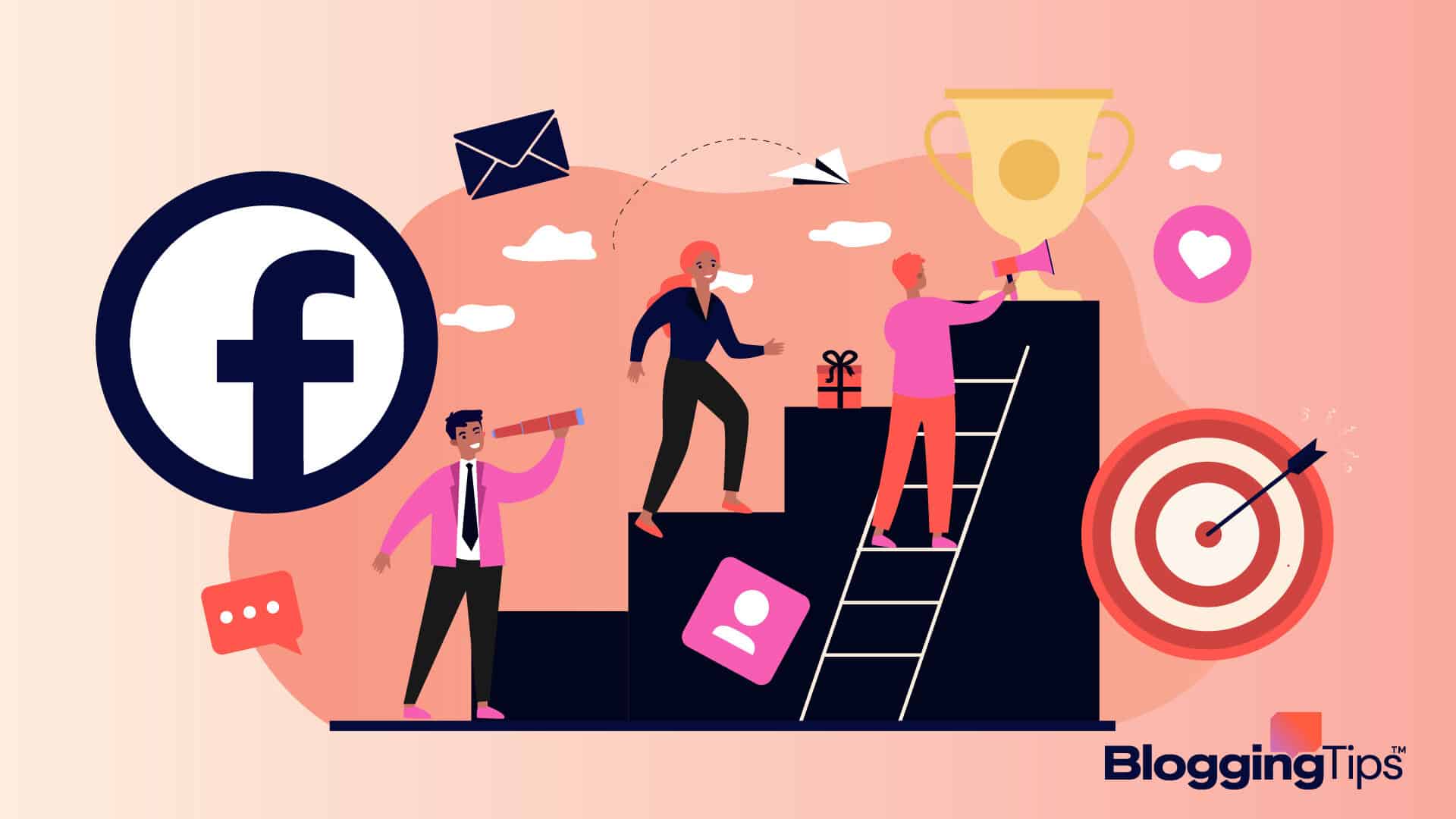
Follow the four-step process below to come up with a well-thought-out plan for your Facebook marketing efforts:
Step 1: Define Your Audience
Your customer base can’t be everyone unless you are selling a generic product like bottled water, so you must identify the specific group of people that will be interested in what you are offering.
The most effective way to build an in-depth understanding of your target audience is to create a buyer persona.
The buyer persona must contain the following information about your ideal customer:
- The gender of your ideal customer (when your product or service is focused on a specific gender)
- Their age range
- Their geographical location
- Their jobs
- The role they occupy at work
- The pain points that would make them seek out the solution offered by your product or service
- Their social media habits (how and when they use Facebook)
- The types of content they prefer to consume on social media
- The influencers that influence their buying habits
You can use a tool like SurveyMonkey to organize a customer survey which will help you get the information you need for your buyer persona directly from your potential customers.
You can get even more information if you already use the Meta Business Suite. The Audience Insights module on the platform will provide you with all sorts of detailed information about your target customers that you can use to fill up your buyer persona.
Step 2: Define Your Marketing Goals
A Facebook marketing campaign must have clearly defined goals because that’s what will shape the type of promotional techniques you will be using.
You have to take time to brainstorm what you would like to achieve with your marketing efforts.
Ask yourself the following:
- Are you trying to get your brand discovered by new potential customers?
- Are you looking to increase sales via the Facebook marketplace?
- Are you trying to attract more traffic to your blog?
- Are you looking for another customer service channel?
Your answers to the questions outlined above will help you get a clearer picture of your marketing objectives.
Step 3: Plan Your Content Strategy
Once you know who you want to target and why you are trying to connect with them, you are one step closer to engaging with your audience on Facebook.
What you must do is identify the types of content that will resonate with your customers while also helping you accomplish your marketing goals.
Your market research will show you the types of content that will attract the attention of your audience. What you will use will then depend on your marketing goals.
For example, a business that is trying to increase product sales may focus on Facebook ads and boosting posts that highlight customer testimonials.
On the other hand, a new business that is trying to build brand awareness may focus on posts that highlight helpful blog content as well as creative, fun posts that have the potential to go viral.
Ultimately the best approach is to mix different types of content to keep your customers engaged. Facebook may also penalize businesses that are pushing their promotional content too aggressively, so make sure you comply with all of the platform’s community standards.
One other important thing you must clarify is your posting schedule. The conventional wisdom is that you should post at Facebook’s best times, but that may not necessarily be when your specific audience is most engaged on the platform.
Luckily, the data you get from Facebook Insights will show the Facebook usage statistics of your audiences and when they tend to come online.
To schedule your posts, click Schedule instead or Share Now after creating the relevant post, then enter the time and date you want the post or Facebook story to appear on your page.
When you are done, click Schedule Now to complete the process. You can manage your scheduled posts in the Publishing Tools window that you can access via the menu at the top of your profile page.
Facebook Marketing Examples
There are several types of Facebook ads, but figuring out the one that will work best for your campaign is not always easy.
To inspire you, I have identified seven ad examples and highlighted why they are so effective.
1. The Tropicfeel Image Ad
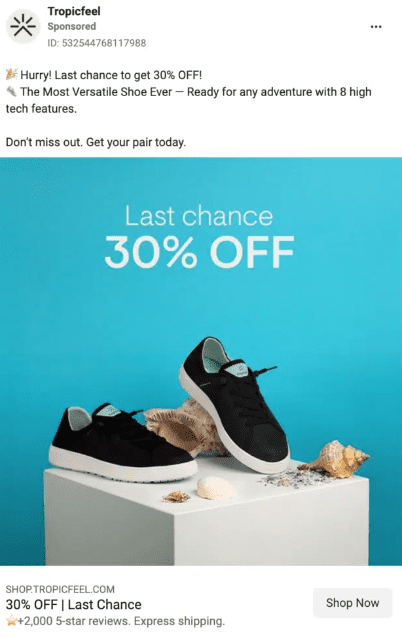
Image ads are relatively easy to create, and they are perfect for promoting a new product launch or raising awareness about sales events like the ad above.
So what can we learn from Tropicfeel’s ad
- The ad text conveys a sense of urgency while also effectively communicating an incentive (discount) to spur people to act quickly before the benefit disappears
- The focal image is of a high-quality, and there are no distractions in the background
- The “+2000 5-star reviews” text provides social proof that several other buyers have purchased the product and are happy with it.
2. The Fold London’s Carousel Ad
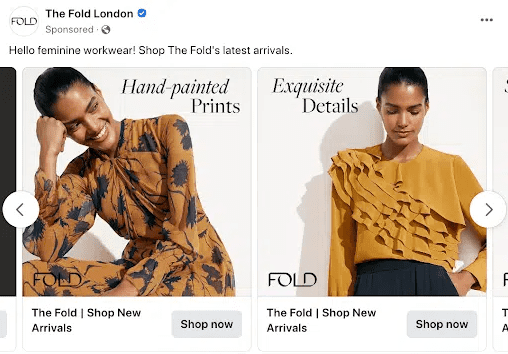
This format is perfect for showcasing how your product works or displaying multiple products on offer from an eCommerce store, like our example above.
What can we learn from The Fold’s ad
- Each slide showcases a specific product with a descriptive title
- There is a CTA on each slide that encourages the audience to make an instant purchase decision
- The images have a consistent color theme that serves as a unifying factor for the entire slideshow
3. Amy Porterfield’s Video Ad
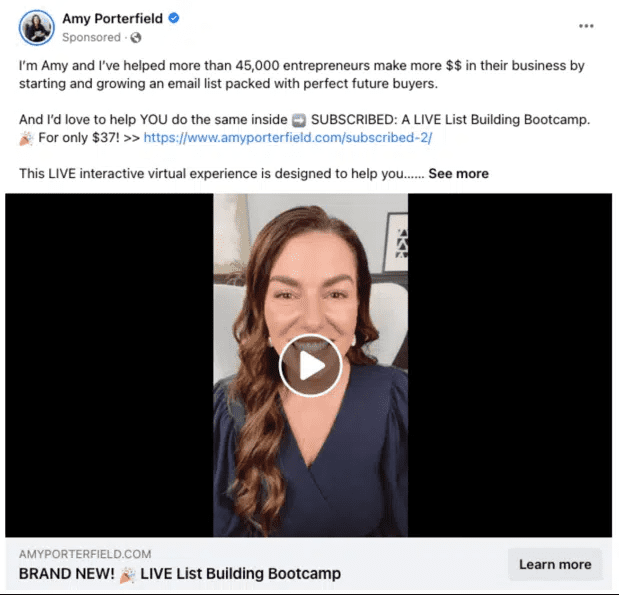
Video ads are perfect for driving engagement; the best videos are usually under 15 seconds.
So, what can we learn from Amy’s video ad:
- The text effectively highlights why Amy is what listening to and what viewers can gain from the video
- In the video, the speaker is shown talking straight to the camera, an approach that helps build trust and is perfect for her coaching business.
- There is a “Learn more” CTA button that tells viewers what to do once they are done watching the video
4. Samcart’s Facebook Story Ad
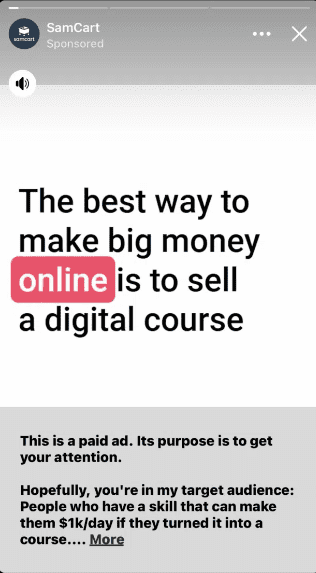
Unlike standard Facebook Stories, story ads last longer than 24 hours. They only show up on mobile devices, and they have unique formatting requirements. They are very effective, though, and research by Facebook shows that 56% of viewers checked out a brand’s website after discovering their product or service in a story.
What can we learn from Samcart’s story ad:
- The use of big fonts and a single highlighted text in each slide instantly grabs your attention
- The copy is casual, humorous, and very self-aware
- There is a “learn more” CTA button at the bottom of each slide
Frequently Asked Questions
How Much Do Facebook Ads Cost?
It is difficult to provide a universal estimate for Facebook ad budgets because ad costs will depend on the audience you are targeting, the competitiveness of your niche, your location, and the duration of your campaign.
Generally, though, an impressions campaign costs at least $1 per day, while a conversions campaign costs around $0.9 per day.
How Can You Advertise On Facebook For Free?
If you don’t have the budget for a paid campaign, you can still promote your business on the social network by sharing helpful content, hosting giveaways, selling on the Facebook marketplace, and joining a Facebook group.
Wrapping Up
The beauty of Facebook marketing is that it can be very effective for businesses of all types and sizes, whether you are a new business, a brick-and-mortar shop, an eCommerce store, or a large corporation.
The techniques and steps outlined in this article are proven, and it’s up to you to adopt what will best help you achieve your marketing objectives.
If you have lessons to share about successful Facebook marketing campaigns you have set up for your business in the past, feel free to do so in the comments section.
